Terry Edwards has graciously offered to let me repost the excellent article he wrote for Small Arms Defense Journal. It’s a two part PDF, and I have posted both parts below.
If you are interested in this little-known developmental side track of the Johnson LMG, you should definitely have a look – and the same goes if you have never heard of the gun. It’s a story with tons of intrigue and engineering – what combination could be better?
Thanks to Mr. Edwards, and also to SADJ for permission to post this!
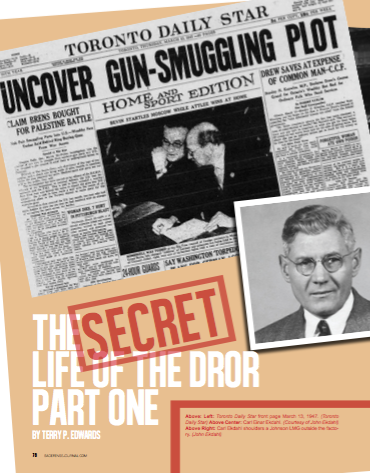
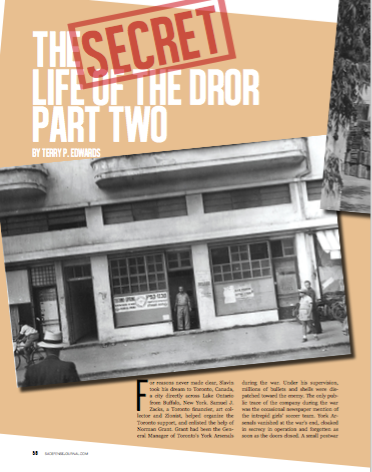

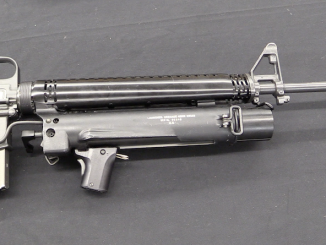
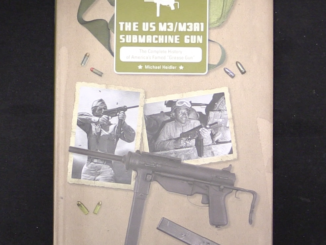
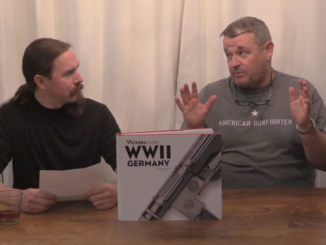
Fantastic story, I knew some of the details as I had the privilege to be able handle and shoot both versions of the Dror back in the early 1980’s. A few hundred Dror’s were imported into the UK back then by SIDEM International (UK) and I purchased many of them very cheaply (around 100 GBP per gun) to convert to semiautomatic only capability for the UK and Commonwealth market (NZ & Oz). Build quality was sketchy at best but they worked OK funnily enough I though the best ones I shot were the Mk 1’s in .303 caliber! I still have a few full auto sears that I removed from Dror’s back then…
Funny how Melvin Johnson, Jacques Michault of SIDEM, the Dror and the AR10 are intertwined. Jacques funded the ARMALITE startup in the early 50’s, Melvin Johnson was a consultant on the AR10 project, SIDEM sold the AR10 as one of the three sales entities, and then SIDEM bought & sold Dror’s and AR10’s in the 1980’s a surplus!
This was a great read. Mr. Edwards is an excellent storyteller, and he had an interesting story to tell here.
These were great guns. As a Title 2 Mfg….I had a couple of DS’s in 8mm Mauser (uses BAR magazines with spacer for shorter cart.). My first exposure was the purchase of an odd-ball curved 20 round single-stack magazine for the .303 Cartridge at the old Great Western Gunshow. I had it for years before IMA brought in the DROR kits (without magazines). Right away I realized what the mag was for….and bought a few of the kits, and used some of the 40 demilled semi-auto 1941 Johnson receivers I’d imported out of Canada……to assemble semi-auto DROR’s. Yes…the specs were “right on”. I also made some 8mm versions. I also had made some 1941 LMG Johnson “semi-auto’s”. After a few years….I still had a complete 1941 semi-auto made….but, it was missing the magazine housing. Finally I ended up fitting the 8mm Mauser DROR magazine housing to it. I just took the magazine spacer out, and a .30/06 cartridge would fit. And…..it worked great.
David Buehn
It’s always fun to read the tortured path that many firearms take in their development. Thanks for the post! ^__^
Thank you for posting the article. I have both models of the DROR, both with the original upper receiver re-welded back together after having been cut for sale in the USA. Before the welding I added denials to keep a full auto lower receiver from being installed as well as having the lower receiver permanently modified to semi-auto. Having had the opportunity to have fired the 2nd Model DROR while in the middle East in the early 60’s stating that the lost of the full automatic feature is not missed. The gun is very accurate in semi-auto much less so in full auto. I disagree with the author of the article in that the guns are not hard to shoot and the recoil is not much different than other weapons in their caliber. My first model DROR has a high serial number and the finish is on par with other military weapons of the period as is the 2nd Model. Just my thoughts Harry
What an interesting story! Thanks for passing it along!
Interesting reading, interesting history behind this MG. Thanks for posting.
Here’s an extract from the Dror trails report, from this website.
10. Very sensitive to a lack of oil (does not function).
11. Very sensitive to dust (does not function).
12. Very sensitive to mud (does not function).
13. Very sensitive to water (does not function).
14. Very sensitive to sea water and sea shore sand (does not function).
I was coming around to the notion that perhaps the AR style of multi lug bolt works best in tubular receivers with a elongated bolt- Necessarily so, due to this configuration engaging a return spring aligned directly behind it running into the stock. But I am not entirely convinced, that it’s possible failure in non inline designs is due to this factor. The Tavor changed the lug design, I think it’s worth trying to establish given the original design is still employed in new rifles the G36 for example.
This modification to the lugs looks logical to me, on the face of it: https://www.ar15.com/archive/topic.html?b=3&f=124&t=544206 and after reading the patent for the current incarnation, not all the lugs are currently required for the purposes of strength.
I have been thinking about how you could remove the lugs altogether on an AR. I have thought about it before briefly, came up with a contraption that was essentially a sort of tilting bolt actuated by the movement of the hammer. A hook, hooked onto a replacement take down pin with reinforced slots for it. It was a basic outline… Just came up with another, sheer the lugs of the current bolt head, and grind off the gas ring on it- Replace it with a large ball bearing drilled through the middle so that it would sit on the bolt head in the area of the current gas ring, in a manner that allowed it to run along it. Then remove the sides so rear of the carrier, replace these with two flat metal plates of the same length. These rest against the buffer in the stock at the rear, and against the rear of the BB at the front when it is fully forward. Upon firing gas hits the front of the BB and pushes it into the plates which expand outwards “The buffer rests against a sligtly shorter spring so it is encapsulated within the tube” the expansion of the plates prevents them from fitting inside a strengthened tube mouth, they pinch against the BB until they can fit via pressure lessing when the bullet has left the barrel I.e. The BB returns to it’s fully forward position. Basic outline.
Probably more of a delay from the BB thing, after the bolt moves a bit.